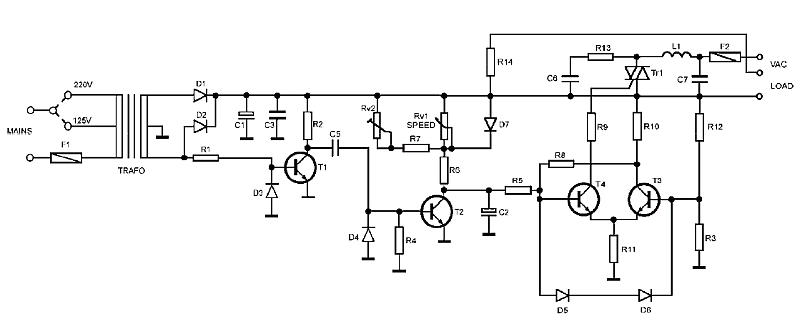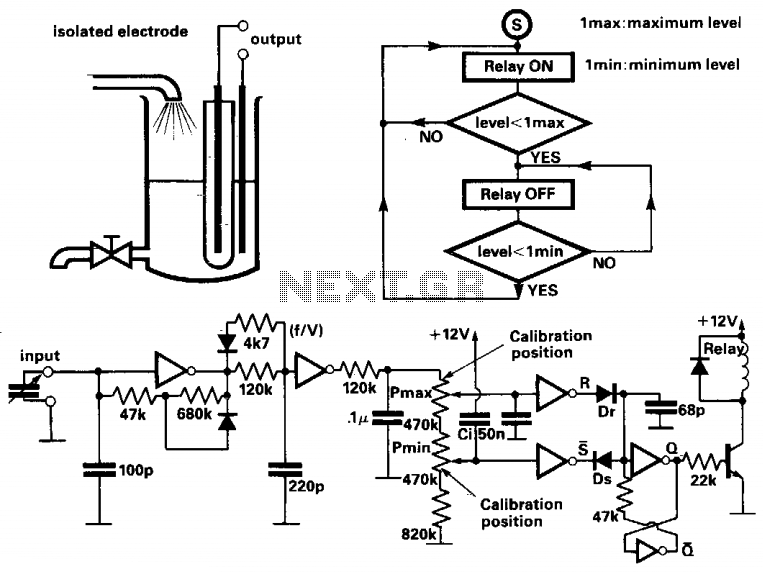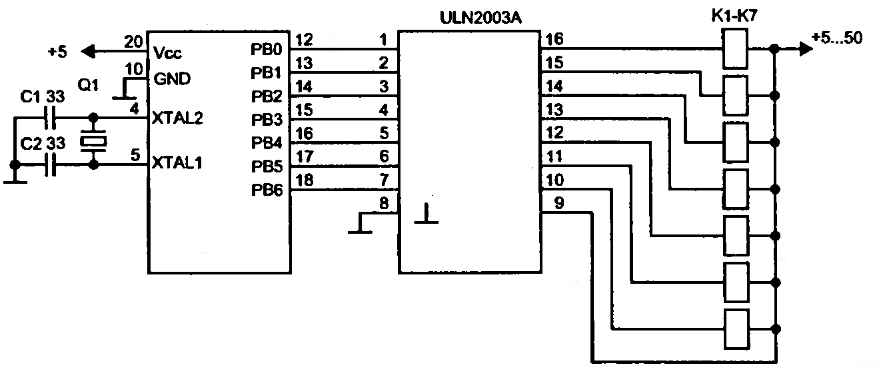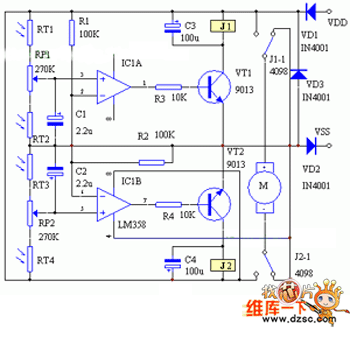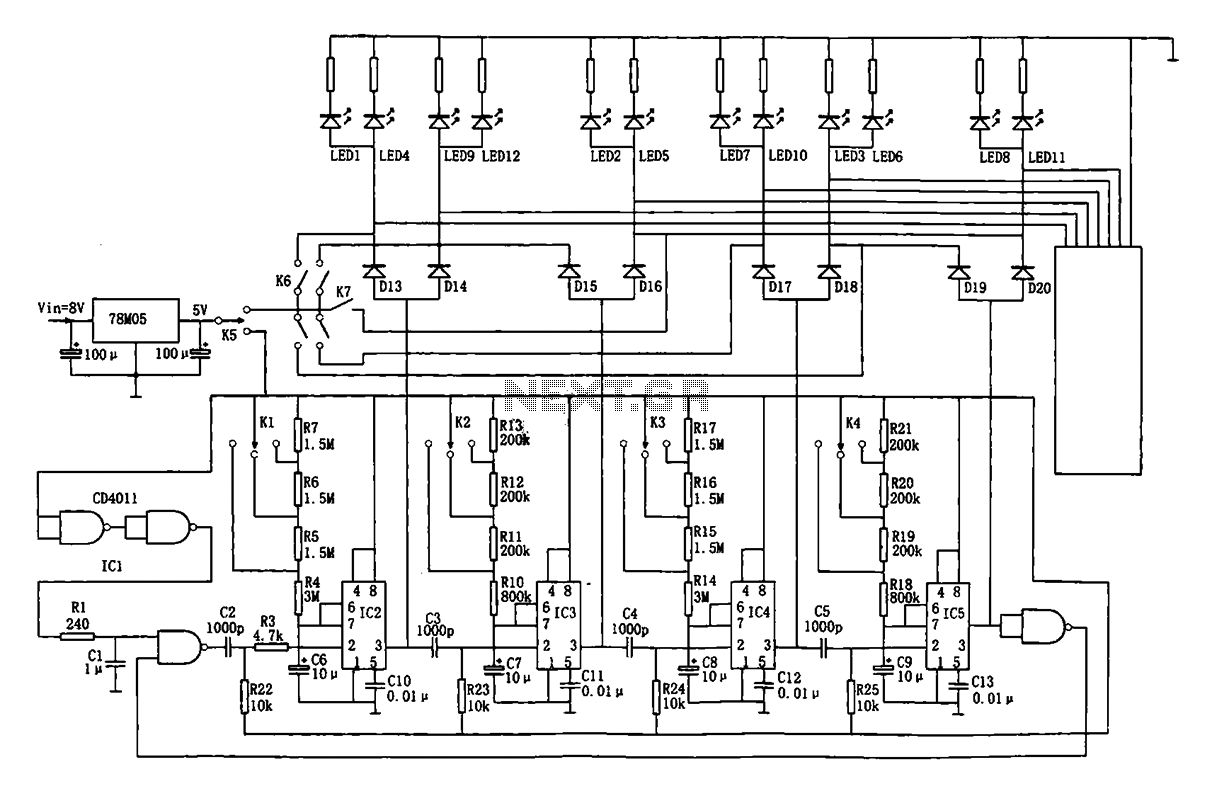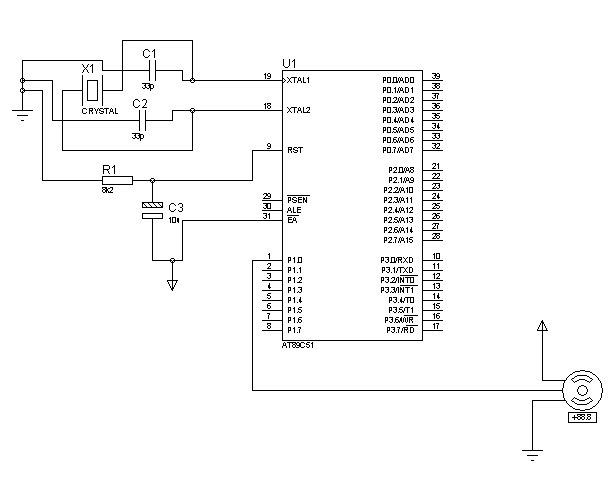
Intelligent Fan Controller

The Intelligent Fan Controller regulates the speed of computer fans according to the internal temperature of the computer, minimizing noise levels. It utilizes a 4-wire, 2-wire, and 3-wire fan configuration in conjunction with a PIC microcontroller, specifically the PIC18F2550. This circuit incorporates a buck converter to enhance PC cooling efficiency.
The Intelligent Fan Controller is designed to optimize the cooling of computer systems by dynamically adjusting fan speeds based on temperature readings. The core of the circuit is the PIC18F2550 microcontroller, which processes temperature data and controls the fan operation accordingly. The microcontroller can interface with various types of fans, including those with 4-wire, 3-wire, and 2-wire configurations, allowing for versatile application in different computer setups.
The 4-wire fans provide the most control, featuring a PWM (Pulse Width Modulation) signal for speed regulation, while the 3-wire and 2-wire fans rely on voltage-based control methods. The circuit employs a temperature sensor, which continuously monitors the internal temperature of the computer. When the temperature rises beyond a predefined threshold, the microcontroller increases the fan speed to enhance airflow and cooling. Conversely, when the temperature falls below the threshold, the microcontroller reduces the fan speed, thereby minimizing noise and power consumption.
In addition to the microcontroller, the circuit includes a buck converter, which efficiently steps down the voltage supplied to the fans, ensuring that they operate within their specified voltage range while maximizing energy efficiency. This converter allows the system to maintain performance without excessive power draw, contributing to the overall reliability and longevity of the computer components.
Overall, the Intelligent Fan Controller not only improves cooling performance but also contributes to a quieter computing experience, making it an essential component for high-performance and silent PC builds.The Intelligent Fan Controller will control the speed of computer fans based on the temperature inside your computer and reduce the noise made by your computer Intelligent Fan Controller 4-wire 2-wire 3-wire speed computer pic microchip PIC18F2550 18F2550 temperature media electronics silicon chip buck converter circuit PC cooling geoff graham.. 🔗 External reference
The Intelligent Fan Controller is designed to optimize the cooling of computer systems by dynamically adjusting fan speeds based on temperature readings. The core of the circuit is the PIC18F2550 microcontroller, which processes temperature data and controls the fan operation accordingly. The microcontroller can interface with various types of fans, including those with 4-wire, 3-wire, and 2-wire configurations, allowing for versatile application in different computer setups.
The 4-wire fans provide the most control, featuring a PWM (Pulse Width Modulation) signal for speed regulation, while the 3-wire and 2-wire fans rely on voltage-based control methods. The circuit employs a temperature sensor, which continuously monitors the internal temperature of the computer. When the temperature rises beyond a predefined threshold, the microcontroller increases the fan speed to enhance airflow and cooling. Conversely, when the temperature falls below the threshold, the microcontroller reduces the fan speed, thereby minimizing noise and power consumption.
In addition to the microcontroller, the circuit includes a buck converter, which efficiently steps down the voltage supplied to the fans, ensuring that they operate within their specified voltage range while maximizing energy efficiency. This converter allows the system to maintain performance without excessive power draw, contributing to the overall reliability and longevity of the computer components.
Overall, the Intelligent Fan Controller not only improves cooling performance but also contributes to a quieter computing experience, making it an essential component for high-performance and silent PC builds.The Intelligent Fan Controller will control the speed of computer fans based on the temperature inside your computer and reduce the noise made by your computer Intelligent Fan Controller 4-wire 2-wire 3-wire speed computer pic microchip PIC18F2550 18F2550 temperature media electronics silicon chip buck converter circuit PC cooling geoff graham.. 🔗 External reference
